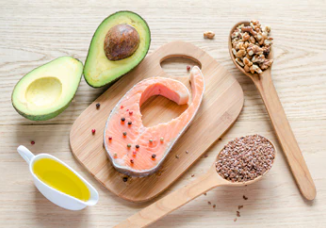Diabetes Diet, Eating, & Physical Activity
Nutrition and physical activity are important parts of a healthy lifestyle when you have diabetes. Along with other benefits, following a healthy meal plan and being active can help you keep your blood glucose level, also called blood sugar, in your target range. To manage your blood glucose, you need to balance what you eat and drink with physical activity and diabetes medicine, if you take any. What you choose to eat, how much you eat, and when you eat are all important in keeping your blood glucose level in the range that your health care team recommends.
Becoming more active and making changes in what you eat and drink can seem challenging at first. You may find it easier to start with small changes and get help from your family, friends, and health care team.
Eating well and being physically active most days of the week can help you
keep your blood glucose level, blood pressure, and cholesterol in your target ranges
lose weight or stay at a healthy weight
prevent or delay diabetes problems
feel good and have more energy
What foods can I eat if I have diabetes?
You may worry that having diabetes means going without foods you enjoy. The good news is that you can still eat your favorite foods, but you might need to eat smaller portions or enjoy them less often. Your health care team will help create a diabetes meal plan for you that meets your needs and likes.
The key to eating with diabetes is to eat a variety of healthy foods from all food groups, in the amounts your meal plan outlines.
The food groups are
vegetables
nonstarchy: includes broccoli, carrots, greens, peppers, and tomatoes
starchy: includes potatoes, corn, and green peas
fruits—includes oranges, melon, berries, apples, bananas, and grapes
grains—at least half of your grains for the day should be whole grains
includes wheat, rice, oats, cornmeal, barley, and quinoa
examples: bread, pasta, cereal, and tortillas
protein
lean meat
chicken or turkey without the skin
fish
eggs
nuts and peanuts
dried beans and certain peas, such as chickpeas and split peas
meat substitutes, such as tofu
dairy—nonfat or low fat
milk or lactose-free milk if you have lactose intolerance
yogurt
cheese

Eat foods with heart-healthy fats, which mainly come from these foods:
oils that are liquid at room temperature, such as canola and olive oil
nuts and seeds
heart-healthy fish such as salmon, tuna, and mackerel
avocado
Use oils when cooking food instead of butter, cream, shortening, lard, or stick margarine.
Related articles
-
 Traditional Chinese medicine becomes popular with Ghanaians
Traditional Chinese medicine becomes popular with GhanaiansMore
-
 Sportsman finds magic in traditional medicine
Sportsman finds magic in traditional medicineMore
-
 TCM gaining recognition with Western institutes
TCM gaining recognition with Western institutesMore
-
 Top 8 Health Tips From Traditional Chinese Medicine
Top 8 Health Tips From Traditional Chinese MedicineMore
-
 TCM gardeners get a diagnosis then DIY diet therapy
TCM gardeners get a diagnosis then DIY diet therapyMore
-
 Spring Allergies Got You Down?
Spring Allergies Got You Down?More
